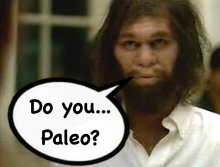 It’s been exactly one month to the day since I started the Paleo diet and I wanted to share some factual results as well as some completely subjective observations. If you’ve not heard of the Paleo diet, this is all the rage right now amongst the startup community. It’s very similar to the Atkins diet only as best I can tell it’s more of an overarching philosophy that we should attempt to live more like cavemen. It’s seemingly based on the idea that our bodies evolved over a million years to process the food we’ve had access to in the wild. Since we’ve only gained access to farming, grains, dairy, processed foods, refined sugars, etc in the last 330 generations or so, we’re not evolutionarily equipped to handle those foods. So the gist is we should eat how our bodies are currently evolved to eat.
It’s been exactly one month to the day since I started the Paleo diet and I wanted to share some factual results as well as some completely subjective observations. If you’ve not heard of the Paleo diet, this is all the rage right now amongst the startup community. It’s very similar to the Atkins diet only as best I can tell it’s more of an overarching philosophy that we should attempt to live more like cavemen. It’s seemingly based on the idea that our bodies evolved over a million years to process the food we’ve had access to in the wild. Since we’ve only gained access to farming, grains, dairy, processed foods, refined sugars, etc in the last 330 generations or so, we’re not evolutionarily equipped to handle those foods. So the gist is we should eat how our bodies are currently evolved to eat.
The Results
So first objective results: I’ve hovered around 210-220lbs since I was in college. On January 9th my weight was on the low side of that continuum at 212lbs. I did a bodyfat measurement that same day at my gym using a handheld Bioelectrical Impedance Method scanner and got a reading of 15.1%. This morning (for the first time since high schoo) I weighed in sub-200 at 197lbs on the same scale I used before. I registered 17.4% bodyfat measured on the same BMI device (at roughly the same time in the morning to equate for variables like water weight, food intake, etc). Those measurements are perplexing because I seemingly gained 2lbs of fat and lost a bunch of lean muscle mass.
Here’s the before and after photos taken on Jan 15th and Feb 8th respectively:
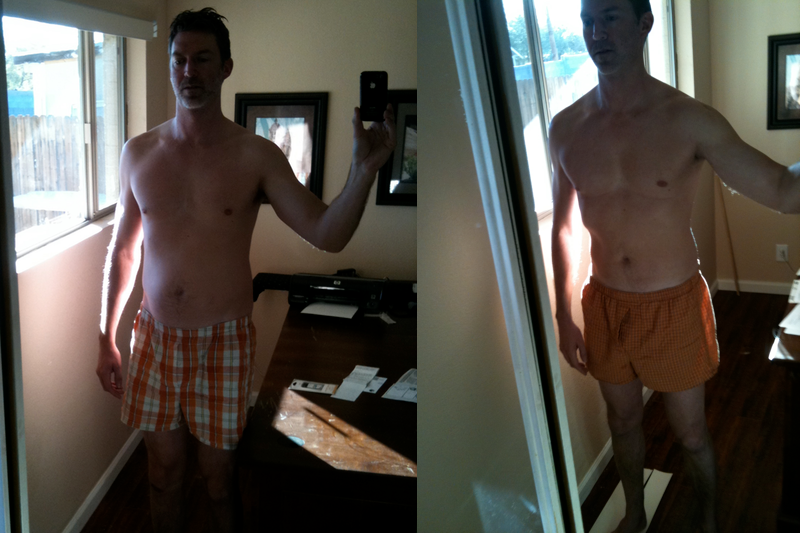
I can hear it already: “you’re just sucking it in on the after pic.” Trust me I’m not – a 15lb weight differential remember… so let me say that again for emphasis:
I’ve lost 15lbs in 30 days with only one visit to the gym and by maintaining my regular running schedule of 3-4x per wk.
Subjective Observations
Now here’s a brain dump of purely anecdotal and factually-unsupported observations:
General affect – I feel fantastic, noticeably more energetic and with more mental alertness than I can remember having felt in… well, forever. I’ve seen comments in various forums that remark on “a positive correlation between the paleo diet and douchebaggery” – lemme say this is not me being douchey. This is me relaying the subjective assessment of feeling more healthy than I’ve felt since high school.
Permanence – I had gone through Bill Phillip’s “Body for Life” program two years ago about this time and achieved decent results. That program however required fairly intense discipline and once finished I gravitated probably 60% back to my former eating & exercise habits. Having done only one month of Paleo I can attest this feels more like a permanent lifestyle change. Fresh foods and free-range meats are just more appealing now, which brings me to a weird observation…
Surreality of the average grocery store – The typical grocery store feels extremely false now. I only travel about 4 of the 30-some aisles when I visit, the rest of them seem… for lack of a better word, fake. Brightly colored boxes & cartons with obnoxious labels masking pseudo-food made mostly of corn products. It’s hard to describe but it’s similar to the foreign feeling I had when I stopped watching TV for a year and eventually came back to it.
Diminished need for sleep – This may not be entirely caused by the dietary change (this period happens to have coincided with an uptick in activity on two startups I’m involved with) but I now sleep about an average of six hours per night where before I required eight in order to feel rested. I have considerably more energy and sleep less.
Substantial weight loss despite no gym activity – The Body For Life program had me in the gym three days per week weight lifting, alternating the other three days running and taking one day off. I’ve continued the running this past year (barefoot style using vibram 5finger shoes – the ones that look like silly gloves for your feet) but gym-wise I only went once during this whole past month. I run approximately 3-4 times each week on avg of about 30min and 3mi each run. This has been a constant though over the past year leading me to draw the conclusion that the weight loss I experienced this past month is almost entirely driven by change in diet.
Concerns
So as awesome as I feel right now, I also know I feel pretty awesome after drinking a bottle of champagne ;-) This isn’t all roses and my concerns are the following:
- The average life expectancy of cavemen is estimated to have been around 35yrs. To my knowledge there’s been no longitudinal studies conducted that have tracked Paleo vs. control groups over time to compare the effect on life expectancy or prevalence of late-life diseases. Not having dairy was probably fine if you only ever lived to 35 and didn’t have to contend with later-in-life conditions like osteoporosis. I’m extremely interested if anyone has data on a study that speaks to the long-term health effects of this diet (even 5-10yr data for a related diet like Atkins). I’ve asked on Quora but no takers yet.
- Riffing on that question: so how do Paleo folks get enough of key nutrients & minerals like calcium given the absence of dairy from the diet?
- What is the typical impact on one’s cholesterol from being on Paleo? I would think consuming as much meat as this diet advocates would potentially become problematic cholesterol-wise for folks unless maybe the absolute amount is irrelevant given the right HDL/LDL ratio.
- How and where are people finding the grass-fed meat advocated under this diet? I have yet to see it in any major grocery stores. I’m assuming there are butcher shops that specialize in this and that it will be pricy. My friend Bryan introduced me to a concept called “cow pooling” which sounds interesting.
- Lastly, how are folks affording to eat under this program? Holy cow (pun intended) this is expensive livin’ – about twice of what I normally spend on food.
At any rate, all in all it’s been a positive experience thus far and I’m glad my friends talked me into trying it. I have not yet read the Paleo Solution which I understand is sort of the seminal work on this diet. I did go off the rails last Friday for my friend’s birthday and have no less than 5lbs of pizza, some assorted cheeses, 2 slices of chocolate cake and a couple beers – all of which are not on the agenda for Paleo. And consequently I felt like ass the next morning as a result. I think having cheat days actually helps with diet compliance not just because it allows you to satisfy a craving but because it also negative reinforces the behavior you’re exterminating. I’ll share future thoughts as I get further down the road with this program.
If anyone has some decent answers to the above concerns please do chime in and share.

 It’s been exactly one month to the day since I started the Paleo diet and I wanted to share some factual results as well as some completely subjective observations. If you’ve not heard of the
It’s been exactly one month to the day since I started the Paleo diet and I wanted to share some factual results as well as some completely subjective observations. If you’ve not heard of the 
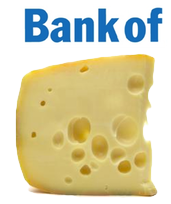 Wow so here comes a rant (and somebody call me on this if I’m way off) but I gotta throw a penalty flag on BofA. They just mailed my PIN number to the mailing address where my replacement debit card was sent. Does that seem hugely flawed to anyone else? They should perhaps consider changing their name because this security practice has more holes in it than a block of baby swiss. Let’s count them:
Wow so here comes a rant (and somebody call me on this if I’m way off) but I gotta throw a penalty flag on BofA. They just mailed my PIN number to the mailing address where my replacement debit card was sent. Does that seem hugely flawed to anyone else? They should perhaps consider changing their name because this security practice has more holes in it than a block of baby swiss. Let’s count them: 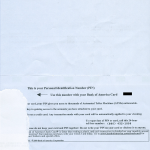
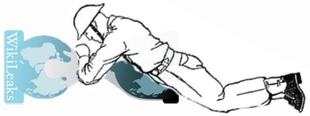 We’re witnessing right now one of the most significant wrestling matches of our lifetime from a “what will be in history books someday” perspective. If you haven’t been following the developments with Wikileaks you really should, if for no other reason than failing to do so is like sitting court-side at the NCAA championship with your eyes closed. Take a moment and read about it (and preferably seek out multiple angles via non-mainstream channels). The short of it is this:
We’re witnessing right now one of the most significant wrestling matches of our lifetime from a “what will be in history books someday” perspective. If you haven’t been following the developments with Wikileaks you really should, if for no other reason than failing to do so is like sitting court-side at the NCAA championship with your eyes closed. Take a moment and read about it (and preferably seek out multiple angles via non-mainstream channels). The short of it is this:  The title is a reference to the
The title is a reference to the 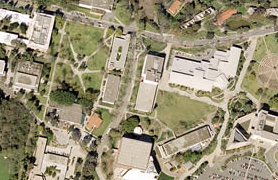 I don’t have the original source on this anecdote but supposedly at a California college (Cal Poly?) they were redesigning the campus and trying to figure out where to build the new sidewalks. It was a complex arrangement of buildings and there were a bunch of conflicting opinions about where the sidewalks belonged. Someone had the ingenious idea that rather than speculating, they should instead run an experiment and let the market speak. So they planted grass the first year and waited. At the end of the year they took an aerial photo and the tread-worn ground became the blueprint for the optimal sidewalk routes as chosen perfectly and implicitly by the student body.
I don’t have the original source on this anecdote but supposedly at a California college (Cal Poly?) they were redesigning the campus and trying to figure out where to build the new sidewalks. It was a complex arrangement of buildings and there were a bunch of conflicting opinions about where the sidewalks belonged. Someone had the ingenious idea that rather than speculating, they should instead run an experiment and let the market speak. So they planted grass the first year and waited. At the end of the year they took an aerial photo and the tread-worn ground became the blueprint for the optimal sidewalk routes as chosen perfectly and implicitly by the student body. 




